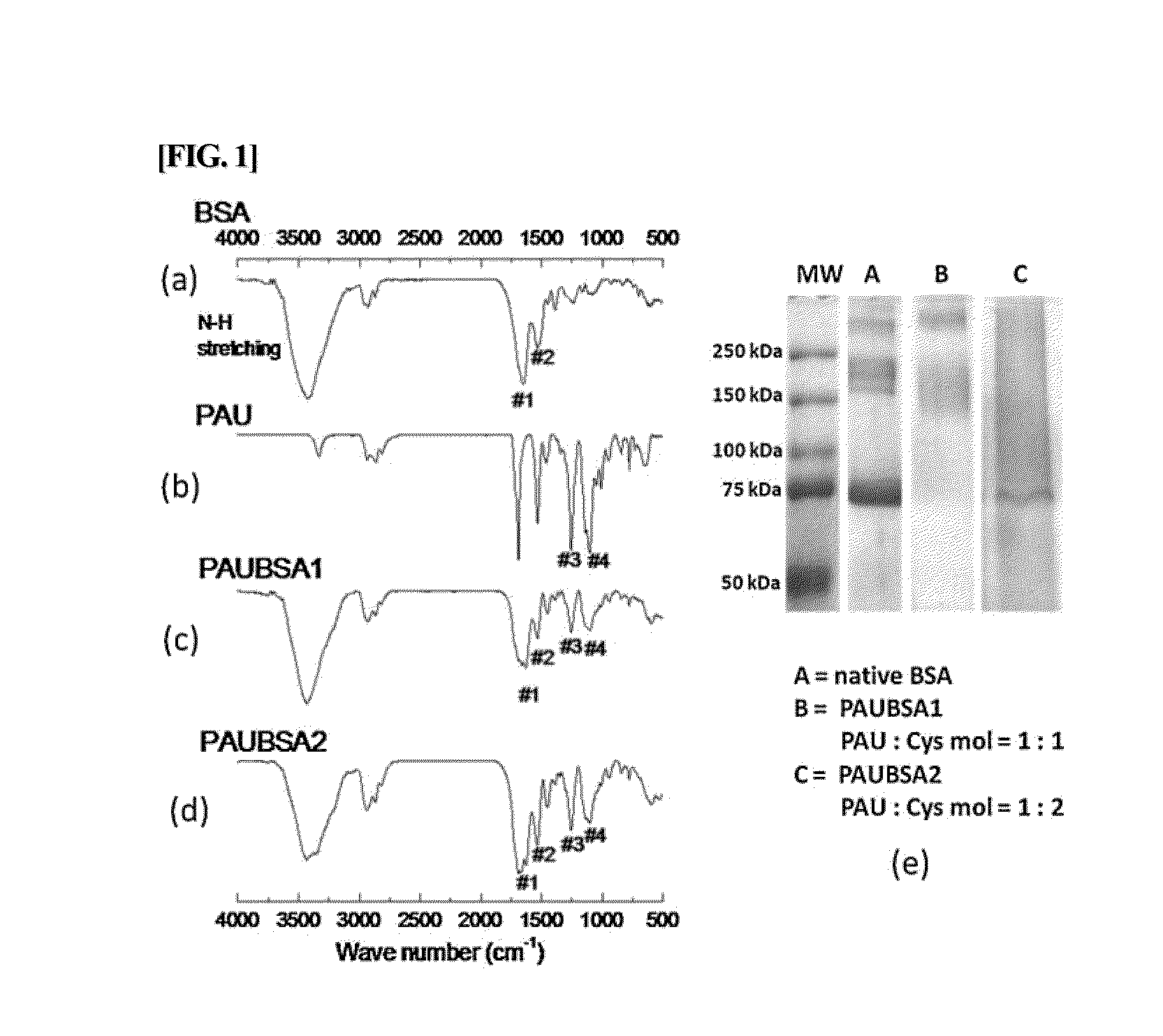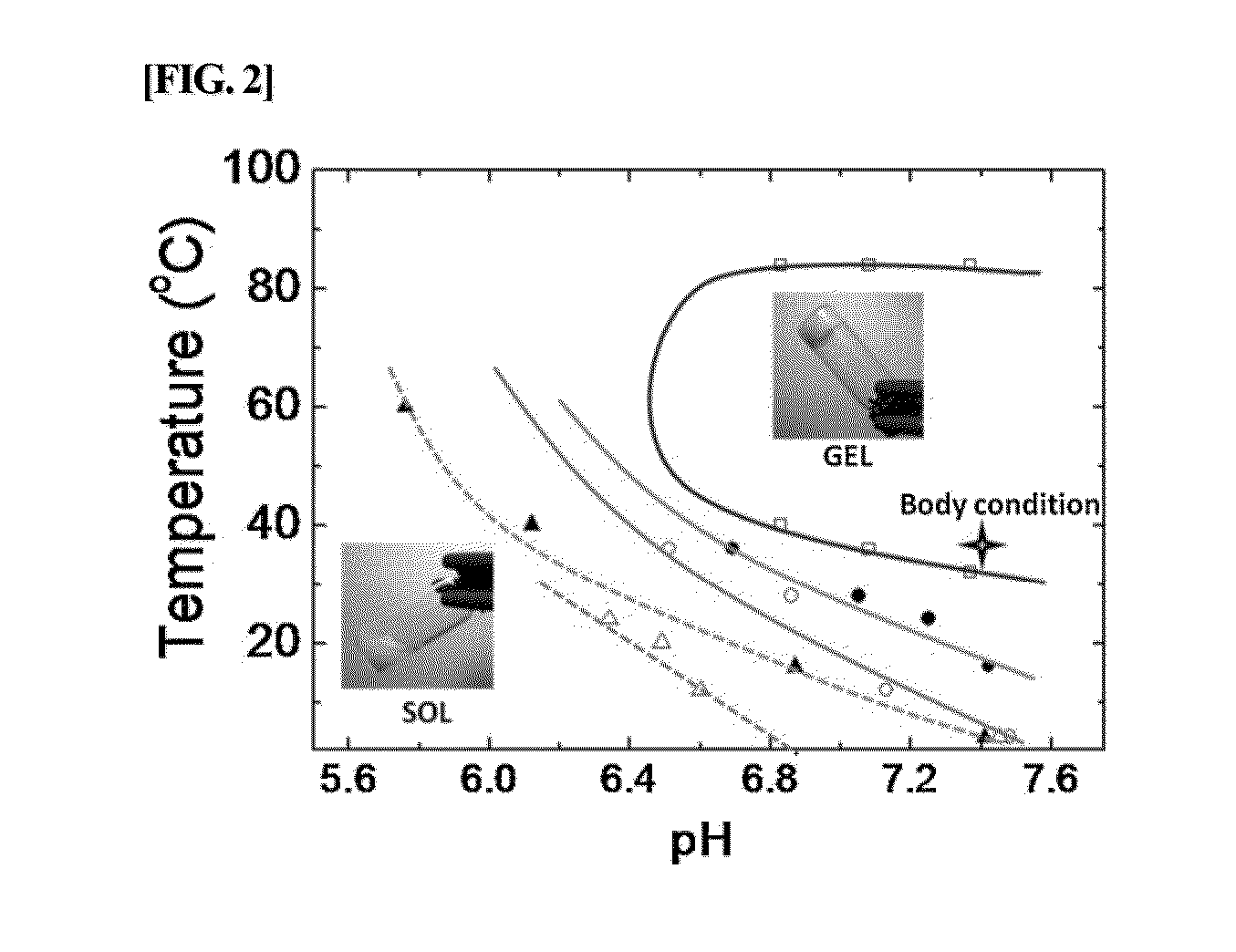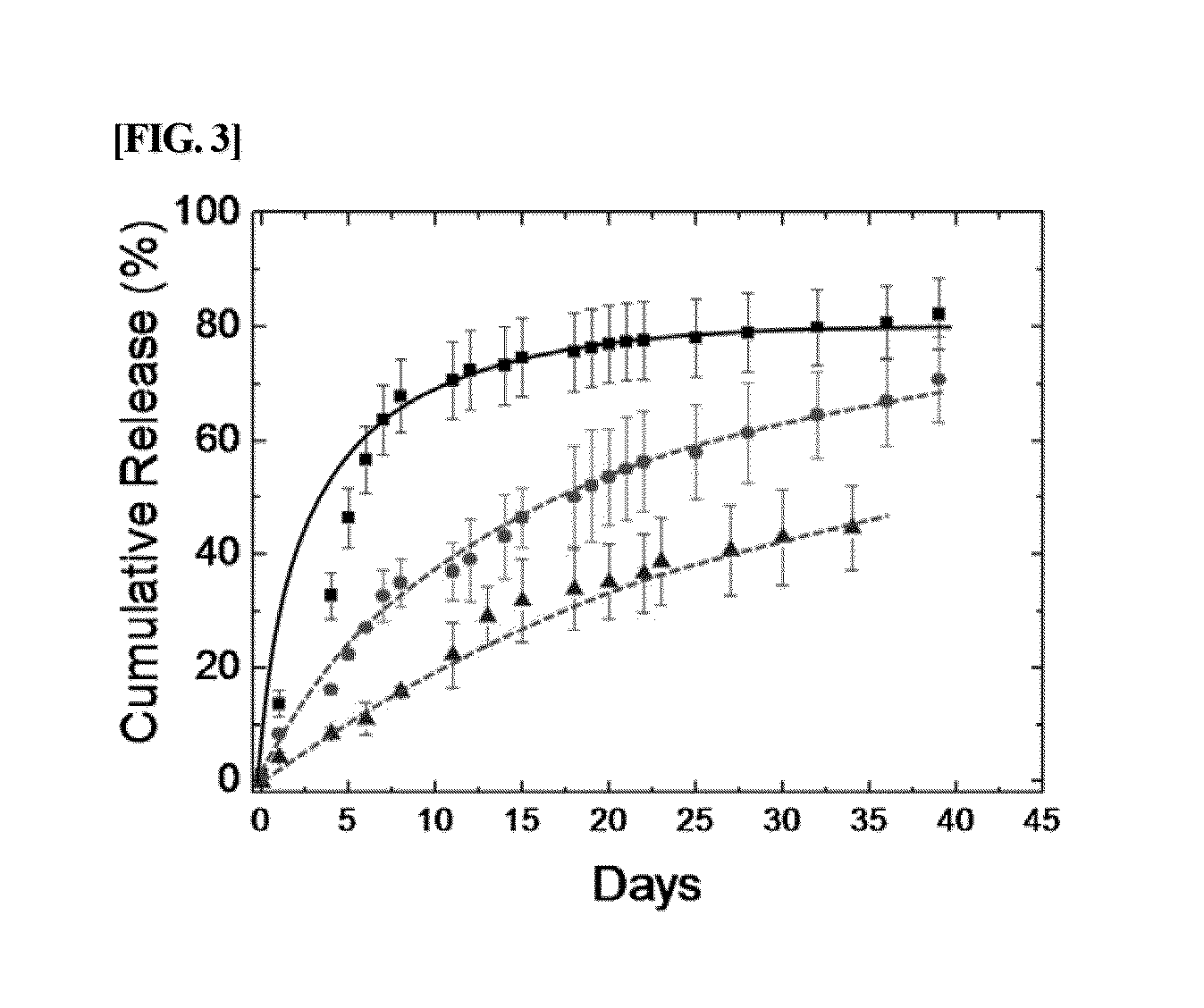Albumin conjugated temperature and pH-sensitive multi-block copolymer, a method of preparation thereof and drug delivery system using the same
a multi-block copolymer and albumin technology, applied in the field of conjugation of albumin and a temperature and ph-sensitive multi-block copolymer, can solve the problems of uncontrolled drug release and decrease the gel strength, and achieve the effects of slowing down the drug release rate, and reducing the initial burst release of drugs
- Summary
- Abstract
- Description
- Claims
- Application Information
AI Technical Summary
Benefits of technology
Problems solved by technology
Method used
Image
Examples
example 1
Preparation of PAU-BSA Conjugates Having Various PAU Molar Ratios Relative to Albumin Cysteine
[0066]Poly(ethylene glycol) (PEG, n=2000 and n=4600), bis-1,4-(hydroxylethyl)piperazine (HEP), hexamethylene diisocyanate (HDI), dibutyltin (II) dilaurate, anhydrous toluene, anhydrous N,N-dimethyl formamide (DMF), anhydrous chloroform (CHCl3), phosphate buffer saline (PBS), BSA, chicken egg white lysozyme, tris(2-carboxyethyl) phosphine hydrochloride (TCEP-HCl), acryloyl chloride, and triethylamine used in the experiment were purchased from Sigma-Aldrich (St. Louis, Mo., USA), and diethyl ether, acetone and all other reagents were analytical grade.
Step 1: PAU Synthesis
[0067]PAU was synthesized using a method described in the previously reported reference (D. S. Lee et al., Polymer, 2008, 49, 4968). In brief, polycondensation was performed in a stoichiometric ratio between the OH and NCO groups, OH / NCO=1. To a 250 mL round bottom flask equipped with a magnetic stirring bar was added 1.0 mmo...
experimental example 1
Analysis of Characteristics of Conjugates of the Present Invention
[0072]The characteristics of PAU-BSA conjugate prepared in Example 1 were analyzed as described below.
[0073]1) Characterization by FT-IR and SDS-PAGE
[0074]In order to confirm the introduction of functional groups in the multi-block copolymers prepared in Example 1 and the reactions of their end groups, FT-IR measurement was performed. FT-IR spectra were obtained via an FT-IR spectrometer (FT / IR-4100 Type A, TGS, Jasco). Additionally, the native BSA and the conjugates were loaded onto an 8% polyacrylamide gel (5-10 μg of samples per each lane) and the presence of the conjugated products between PAU and BSA, i.e., the production of a conjugate, were confirmed by SDS-PAGE. The gel was stained with Coomassie blue and digitally imaged.
[0075]In Example 1, the multiblock copolymers were synthesized using PEG, HDI, and HEP as monomers. PAU was acrylated by reacting with acryloyl chloride before being conjugated to BSA. The co...
example 2
Preparation of PAU-BSA Conjugates Using PEGs with Different Molecular Weights
[0096]All reagents were purchased from Sigma Aldrich and used without further purification PEGs with molecular weight of 2000 or 4600 were used for PAU synthesis, and were named as PAU2 and PAU4, respectively. The synthesis and acrylation of PAU were performed based on the methods described in Example 1 above. 1H-NMR was employed to validate the end group conversion and to verify the purity of the final products.
[0097]The conjugation between PAU and BSA was performed as shown in Reaction Scheme 2 below by modifying the method described in a previously reported reference (L. Oss-Ronen, D. Seliktar, Acta Biomater. 2011, 7, 163).
[0098]As shown in Reaction Scheme 2 above, a copolymer solution (the molar ratio of PAU:albumin cyseines was 1:1) was added to a 7 mg / mL BSA solution in 8 M urea, and was allowed to react at room temperature overnight. The reactants were precipitated in acetone, redissolved in PBS cont...
PUM
| Property | Measurement | Unit |
|---|---|---|
| temperature | aaaaa | aaaaa |
| drug release time | aaaaa | aaaaa |
| pH-sensitivity | aaaaa | aaaaa |
Abstract
Description
Claims
Application Information
 Login to View More
Login to View More - R&D
- Intellectual Property
- Life Sciences
- Materials
- Tech Scout
- Unparalleled Data Quality
- Higher Quality Content
- 60% Fewer Hallucinations
Browse by: Latest US Patents, China's latest patents, Technical Efficacy Thesaurus, Application Domain, Technology Topic, Popular Technical Reports.
© 2025 PatSnap. All rights reserved.Legal|Privacy policy|Modern Slavery Act Transparency Statement|Sitemap|About US| Contact US: help@patsnap.com



